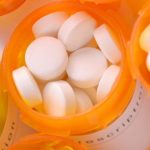 On Feb. 28, 2023, the U.S. Food & Drug Administration (FDA) approved sarilumab (Kevzara) for the treatment of adults with polymyalgia rheumatica (PMR) for whom glucocorticoids have proved inadequate or who cannot tolerate a glucocorticoid taper.1,2 Sarilumab is an interleukin (IL) 6 receptor antagonist. In May 2017, the FDA initially approved the agent for the treatment of adults with moderate to severe, active rheumatoid arthritis (RA) who cannot tolerate one or more disease-modifying anti-rheumatic drugs (DMARDs) or for whom one or more DMARDs have proved inadequate.3
On Feb. 28, 2023, the U.S. Food & Drug Administration (FDA) approved sarilumab (Kevzara) for the treatment of adults with polymyalgia rheumatica (PMR) for whom glucocorticoids have proved inadequate or who cannot tolerate a glucocorticoid taper.1,2 Sarilumab is an interleukin (IL) 6 receptor antagonist. In May 2017, the FDA initially approved the agent for the treatment of adults with moderate to severe, active rheumatoid arthritis (RA) who cannot tolerate one or more disease-modifying anti-rheumatic drugs (DMARDs) or for whom one or more DMARDs have proved inadequate.3
In patients with PMR, the recommended sarilumab dose is 200 mg given as a subcutaneous injection once every two weeks in combination with a tapering course of glucocorticoids. Sarilumab can also be used alone after the discontinuation of glucocorticoids. The treatment should not be prescribed for patients with an absolute neutrophil count (ANC) of less than 2,000/mm3, a platelet count of less than 150,000/mm3 or liver transaminases of more than 1.5 times the upper limit of normal.
Background
The FDA approval was based on results from the 52-week SAPHYR trial. The phase 3 clinical trial enrolled patients with active, glucocorticoid-resistant PMR who experienced disease flares while taking at least 7.5 mg prednisone daily, or the equivalent, during a glucocorticoid taper. They were randomized to receive 200 mg of sarilumab every two weeks with a 14-week glucocorticoid taper (n=59) or placebo (n=58).4
The primary study end point was the proportion of patients who achieved sustained remission at week 52. This outcome was defined as being in disease remission by week 12 and the absence of disease flare, C-reactive protein normalization from weeks 12–52, as well as adherence to the study glucocorticoid taper from weeks 12–52.
The Results
The patients had similar demographics, and were mostly white women, with a median age of 70 years. At week 52, 28% of patients who received sarilumab and only 10% of patients who received placebo attained the study’s primary end point (P=0.0193). In patients who received sarilumab, the proportion of those without the signs and symptoms of PMR increased at week 2 and continued to increase over time through the end of the study period. Additionally, patients who received sarilumab were less likely to experience disease flare after achieving clinical remission than those who received placebo (16.7% vs. 29.3%; hazard ratio [HR] 0.56; 95% confidence interval [CI] 0.35–0.90; P=0.0158). (Note: The study was cut short due to the COVID-19 pandemic.)
At each visit after baseline, the proportion of patients without the signs and symptoms of PMR was higher in patients who received sarilumab than in those who received placebo. A similar trend was noted when patients who received rescue therapy with glucocorticoids were excluded from the analyses.5
A higher proportion of patients who received placebo required additional rescue therapy during the study period than those who received sarilumab (58.6% vs. 32.2%; P=0.0053 [Fisher’s exact test]). The cumulative proportion of patients requiring rescue therapy was higher after the baseline visit up to week 52 in the patients who received placebo than in those who received sarilumab.
No new safety signals were found during this study. The adverse events were consistent with the known safety profile of sarilumab. These adverse events included neutropenia (15%), leukopenia (7%), constipation (7%), pruritic rash (5%), myalgia (7%), fatigue (5%) and injection site pruritus (5%). The serious adverse event of neutropenia occurred in two patients (3%) treated with sarilumab and none treated with placebo. In both neutropenia cases, the patients had a neutrophil count less than 500/mm3 without any infections. The neutropenia resolved after the permanent discontinuation of sarilumab.3
Michele B. Kaufman, PharmD, BCGP, is a freelance medical writer based in New York City and a pharmacist at New York Presbyterian Lower Manhattan Hospital.
References
- Highlights of prescribing information: Kevzara (sarilumab) injection for subcutaneous use. U.S. Food & Drug Administration. 2023 Feb 28. http://tinyurl.com/3udxmets.
- Kevzara (sarilumab) approved by FDA as first and only biologic indicated for patients with polymyalgia rheumatica. Regeneron. 2023 Feb 28. http://tinyurl.com/4bw6u3nn.
- Kevzara (sarilumab) injection. U.S. Food & Drug Administration. 2017 Jun 3. http://tinyurl.com/mwavs5pc.
- Spiera R, Unizony S, Warrington K, et al. Sarilumab in patients with relapsing polymyalgia rheumatica: A phase 3, multicenter, randomized, double blind, placebo-controlled trial (SAPHYR) [abstract: 1676]. Arthritis Rheumatol. 2022 Oct;74(suppl 9).
- Spiera R, Unizony S, Warrington K, et al. Resolution of PMR signs and symptoms in patients treated with sarilumab: A phase 3, multicenter, randomized, double blind, placebo controlled trial (SAPHYR) in relapsing PMR [abstract: 1543]. Arthritis Rheumatol. 2022 Oct; 74(suppl 9).


